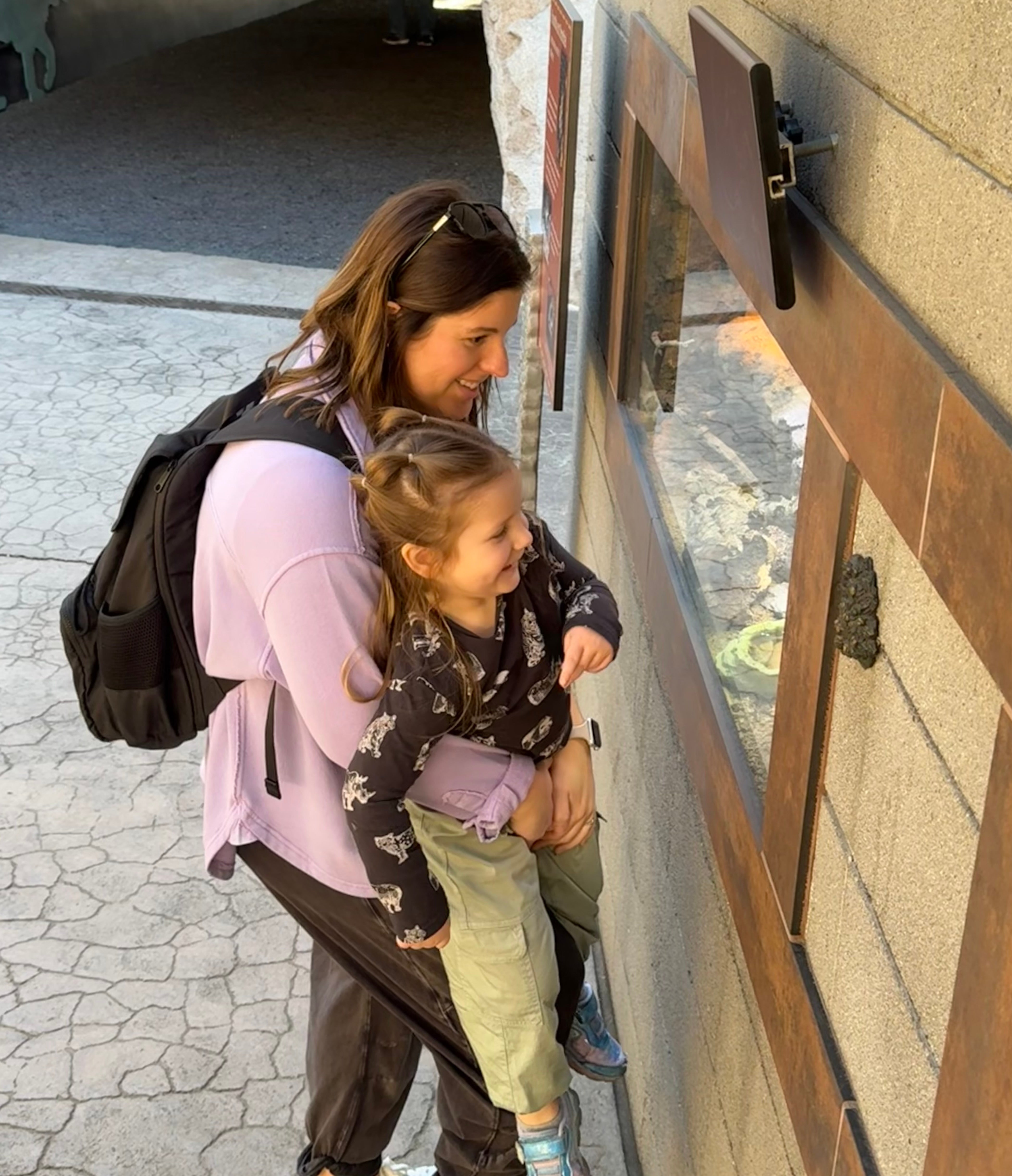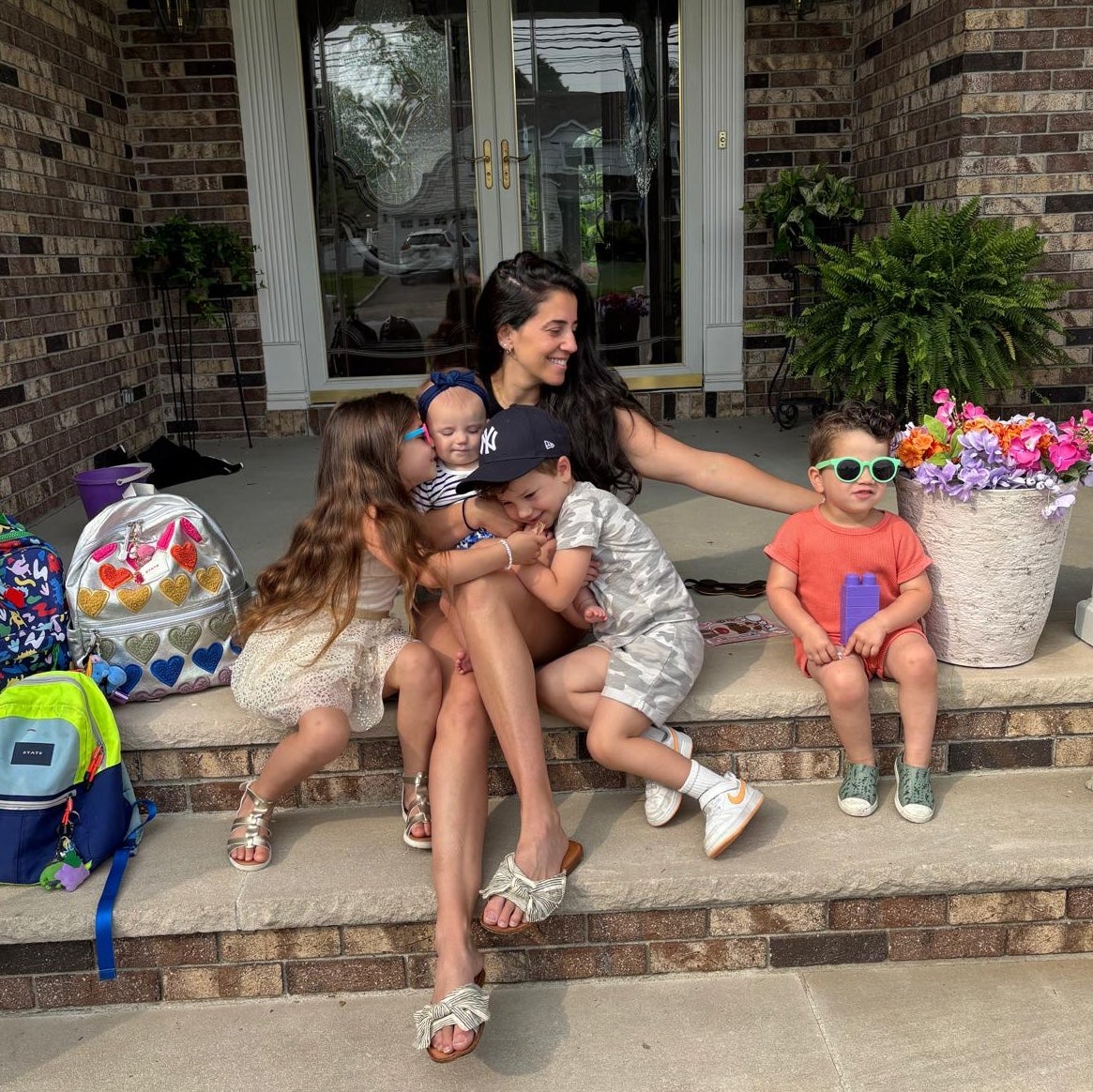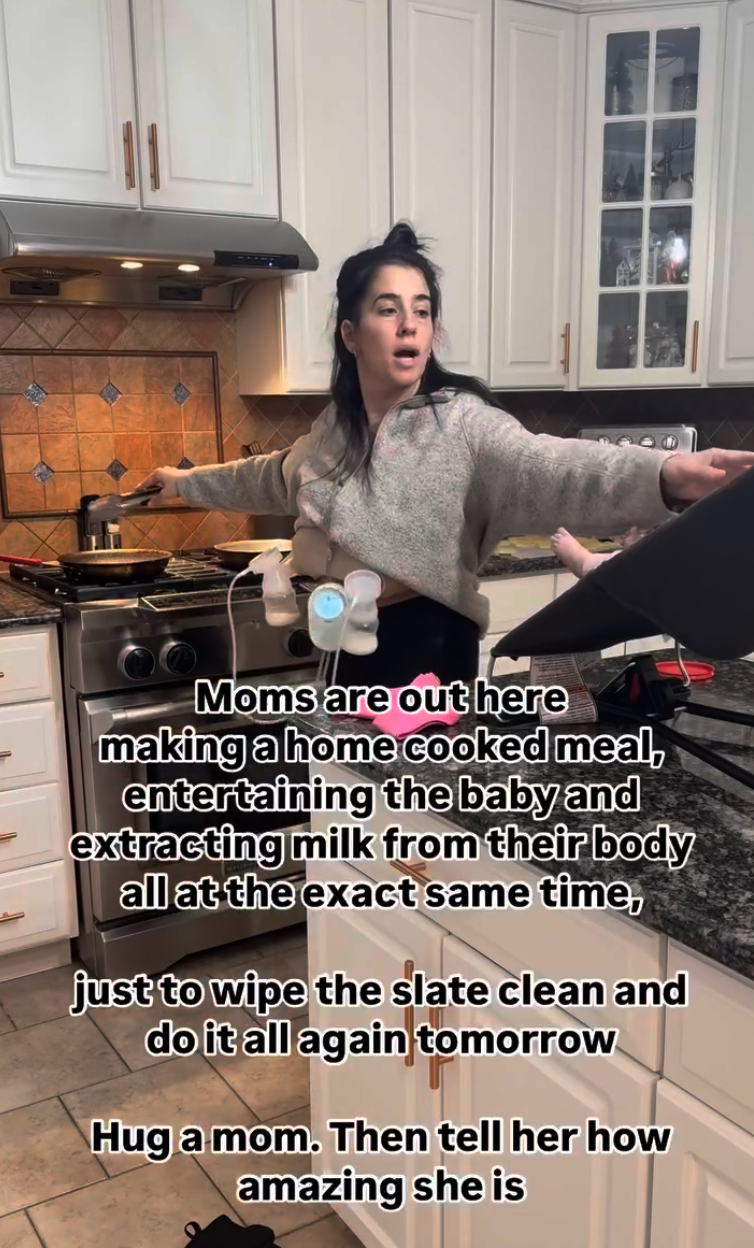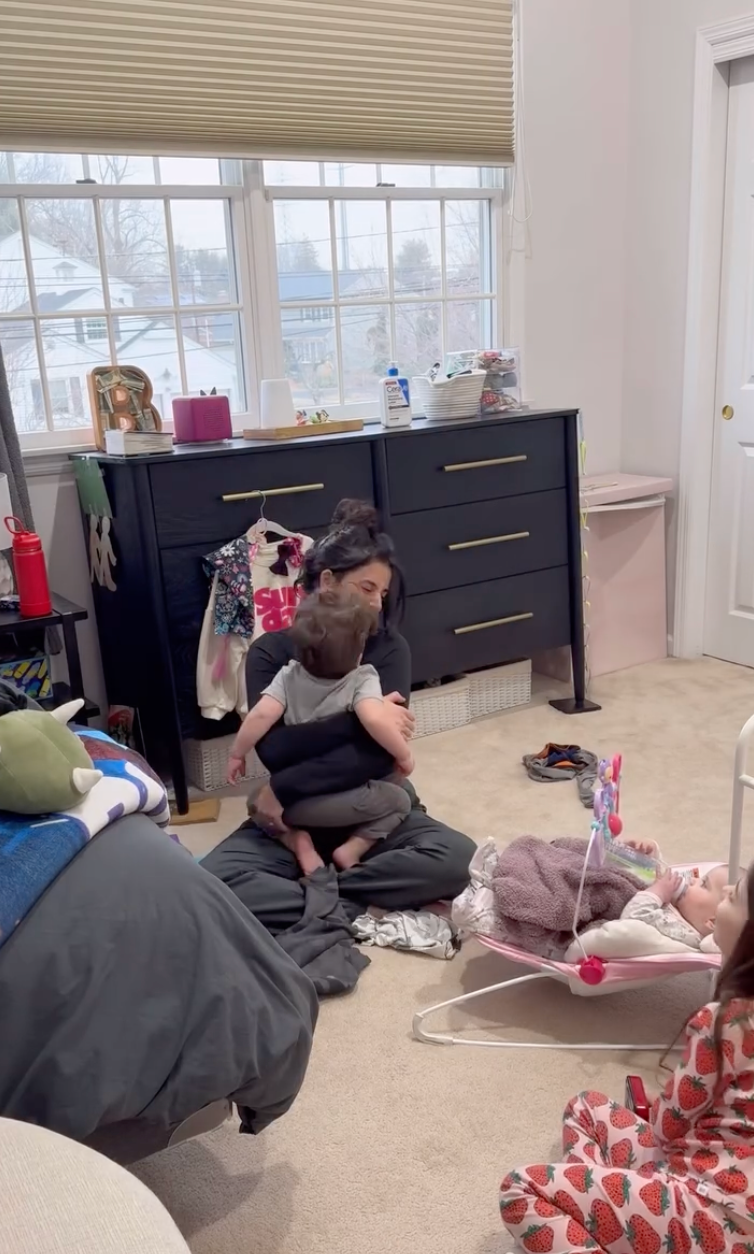
Mom-of-two Meghan grappled for months with the decision to leave her job as a nurse to stay at home to raise her one and four-year-old.
After the birth of her second child last year, the 33-year-old from Springfield, Illinois, struggled when she went back to work at just 12 weeks postpartum — a scenario Meghan described as “borderline traumatic.”
She attempted to juggle her busy decade-long nursing career with raising two small kids, but after six months an exhausted Meghan had enough.
“I felt like my kids got my emotional leftovers at the end of the day,” Meghan, who asked to not use her surname for privacy reasons, told The Independent. “I was like, this trade-off isn’t worth it.”
So, she quit.
The U.S. is experiencing a crisis for working mothers, with women aged 25 to 44 with kids under five leaving the workforce in droves.
Between January and June this year, the share of working mothers in that category dropped nearly three percentage points from 69.7 percent to 66.9 percent, according to analysis of federal data by Misty Lee Heggeness, a University of Kansas associate professor of economics and public affairs.
More widely since January, 212,000 women over 20 have left the workforce, while 44,000 men entered it, according to the latest figures from the Bureau of Labor Statistics. Meghan, who quit her job in May, was one of them.
The reasons why women are quitting work to stay home with the kids vary, but include unaffordable childcare costs, inadequate maternity leave, and companies pulling back on pandemic era work from home policies to drive employees back to the office five days a week.
Mothers saw the employment rate tick up after the pandemic, in part due to work from home flexibility.
“It’s clear that we’re backsliding in the Ken-ergy economy, that the return-to-office chest pounding is having a real ripple effect,” Heggeness told The Washington Post, referring to when Ken takes over the once-female-run Barbie Land in the Greta Gerwig movie.
“It’s become harder for women, particularly those with caregiving responsibilities, to thrive in this job market,” she added.
Mom-of-four Casey Puleo had a decade-long career as an accountant for the NFL before she decided to pack it in to be at home with her young kids when pregnant with her third in February 2022.
“My internal voice started to turn about, saying ‘I can’t do this,’” the 36-year-old from New Jersey said. “My kids are more important. My family’s more important. There was no balance.”
One of the drivers behind Casey’s decision was her employer’s in-person workplace policy. In May 2021, the NFL mandated all football staff back to the office three days a week. The change impacted Casey’s department in 2022, the year she quit.
“I felt I had to make a choice to continue working or have somebody else raise my kids, because they were calling for us to come back into the office. And that was another big reason why I didn’t want to do it,” Casey said. “I had a self reflection moment and realized that it just wasn’t going to be good for my kids. It wasn’t going to be good for me.”
Now the NFL’s policy is five days a week, with some exemptions. “The NFL prioritizes having an in-person workplace as it enables us to more effectively collaborate, connect and build a workplace culture that will drive our continued success,” a statement on the league’s website says.
For some women, staying at home to raise a family is a life-long dream. But giving up her high-flying NFL career was a tough pill for Casey to swallow. “That was my drive, that was my passion,” she said. “My initial goal when I started was to work my way up. It was everything that I had worked for.”
Meghan, who loved her nursing job, felt similar. After the birth of her first child in 2020, becoming a stay at home mom (often referred to as SAHM) never crossed Meghan’s mind.
“I wasn’t in a place that I even thought about staying home,” Meghan said. “You’re reckoning with this new identity. I went back to work. I mean, it had its struggles, but at the time, I was like, ‘this is where I need to be. It’s fine.’”
But symptoms of burnout began to set in for her and her husband, who also works in healthcare. They’d come home ranting about work and how difficult it was, frustrated at the limited time they had with their child and how the stress of it impacted their own happiness.

After her second child was born in July 2024 and after her maternity leave was up, Meghan battled through until May this year, when she realized she couldn’t carry on any longer.
“I just felt like we were constantly rushing everywhere,” she said. “Rushing kids is hard. It’s draining yourselves… packing lunches, packing pump parts, pumping in a closet at work three times a day. It’s just a lot.”

Many mothers in the U.S. will immediately recognize her situation, with 10 weeks the average length taken for maternity leave.
The soaring cost of childcare was another factor in Casey’s decision, and it doesn’t surprise her that many other women are leaving the workplace because of how much of their wage — if not all of it — is spent on childcare.

“I’m sure a lot of it has to do with the cost of childcare, because what is the point of working if everything you’re making is going to pay for somebody else to raise your kids?” she said. “I think moms are realizing how important is to be with them.”
While Casey credits supportive husband Ed, who also works for the NFL, for providing financially for the family, losing her financial independence was a difficult adjustment.
“It was hard when I left. A big part of it is definitely the financial part, contributing to your family financially and trying to see where I fit,” Casey said. “Sometimes I’m like, Oh, I can’t do this for myself because I don’t make any money. I lost myself in those types of ways — the freedom.”
Meghan noted that while her husband was also able to earn enough to support their whole family financially, she still felt like her hand was forced due to the extortionate cost of childcare and other factors.

“I just wish people would maybe consider and see the perspective that this number isn’t just because we all think being home is a glorious thing,” Meghan said, referring to the statistics of women who have left work recently. “I am choosing my heart. I’m choosing what, right now, is the best thing for us that will help my family and we’ll be the happiest, because I feel like I had a choice.”
“But at the same time, it’s because of childcare, daycare, pickup, the rushing around,” she caveats.
Particularly against the backdrop of an administration that is encouraging women to have more children, pushing the pronatalism and “Tradwife” movements as abortion rights get curtailed, Meghan struggled with the idea of becoming a SAHM herself.
“I’ve just kind of had to do a little bit of my own soul searching,” Meghan said. “I would consider myself a feminist person. So there’s a part of me, especially right now in this political climate, that feels a little annoyed with myself that I’m home full time with the kids.”
“But at the same time, I’m like, no, I’m doing what’s good for our family and what isn’t being given to us is support, better leave and time,” Meghan added.
Despite her inner wrangling over the decision, Meghan has no regrets. “I am in the season of just loving motherhood, and obviously it has all its struggles, but I am embracing it,” she said.
Casey says said she doesn’t regret quitting work but says it took a while to figure out who she is after leaving her career for motherhood — and the process is ongoing.
Her kids are six, four, three and one and she shares glimpses into the chaos of life at home on Instagram. In one post, Casey is pumping while she rocks her baby in a bouncer with one hand, and cooks dinner in the other. “Moms are out here making a home cooked meal, entertaining the baby and extracting milk from their body all at the exact same time,” she captioned the video. “Hug a mom. Then tell her how amazing she is.”
In another, the mom documents the military-style operation of getting all four kids ready for the day and bundling them into the car. But that work doesn’t always get recognized.
“When your kids get a little bit older, they’re like, ‘Daddy works and mommy stays at home, mommy doesn’t have a job.’ And that kind of thing, it’s like a mirror,” Casey said. “You can work, you can be a mom, and you can have a job. So I feel very lost in that.”
“And then on the other side, I can also fulfill myself in things outside of motherhood,” she added. “So I’m very much in that gray area right now.”




